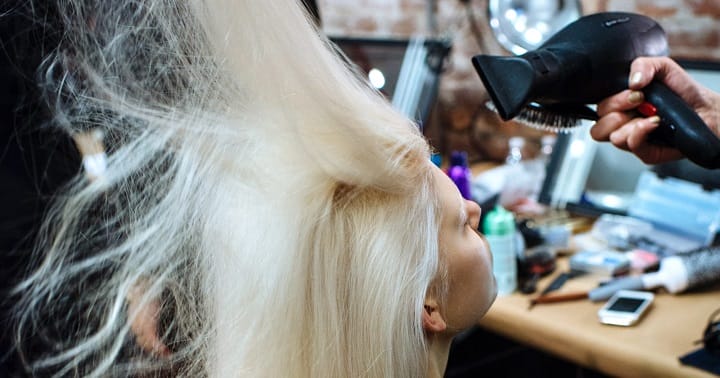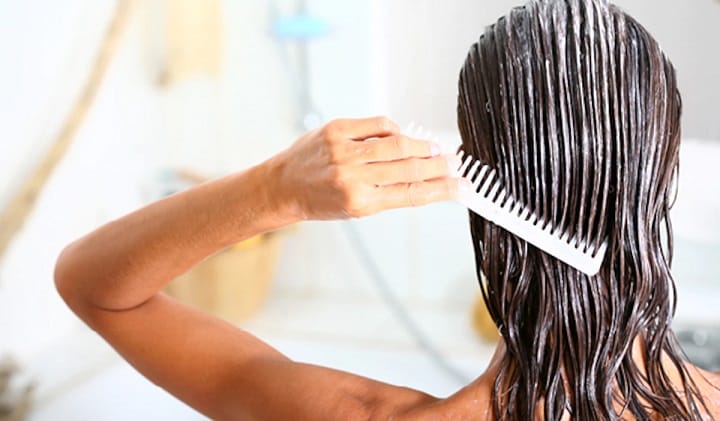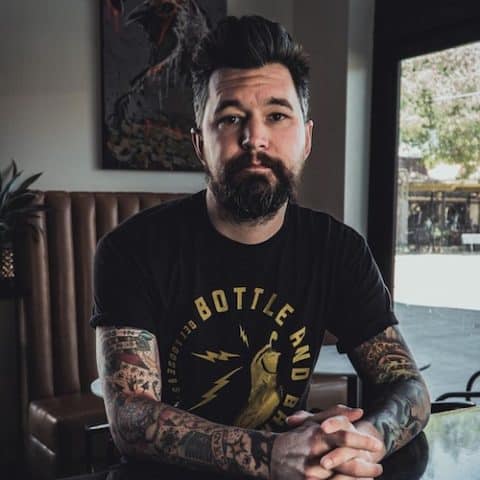Finding and using the best hair bleach is significant if you are thinking of having your hair bleached. You will damage your hair if you don’t use the right product and follow the appropriate procedures.
Prevent that from happening by going for quality bleach and applying it correctly. You may also want to seek the help of hair experts and stylists to protect your mane.
Table Of Contents
Types of Hair Bleach
There is a high possibility for you to make bleached hair silky and soft if you make it a point to research and understand the different types of bleach you can use for your hair.
The reason is that it helps you make the best choice out of the many types of bleaching products and solutions presented to you.
To give you an idea, here are three of your most common options:
Oil Bleach
Primarily made using sulfonated oil and hydrogen peroxide, you can mix oil bleach with other lightning activators and volume developers. Expect this type of bleach to lighten your hair by three shades effectively.
It is also capable of providing maximum control when it comes to lightning. The oil bleach is an excellent choice to create highlights and lift color from the roots.
Powder Bleach
Among the three types of bleach, the one that provides the quickest result is powder bleach. One advantage of this type of bleach is that it holds well while ensuring that it does not overlap with hair that went through coloring in the past.
To start using the powder bleach, you must mix it with a developer to form a paste with a thick consistency. Be careful when using the powder bleach, though, since it has no conditioning ingredients. This may cause your hair to suffer from excessive dryness.
Cream Bleach
This is a popular choice for those who intend to bleach hair from the comforts of their own home. It has a thicker consistency compared to oil. This promotes ease of application as it will not drip or run.
The cream bleach is also known for its bluing agent and the conditioners and thickeners used as ingredients. Its users love it because it can lower the risk of drying your hair too much after bleaching.
It may not work that fast when it comes to lightening your hair, but you are assured that you will see the lift of color slowly based on your preferred shade. Once you achieve the specific shade you want, you can finally stop the bleaching process.
This is a popular choice for those who intend to bleach hair from the comforts of their own home. It has a thicker consistency compared to oil. This promotes ease of application as it will not drip or run.
The cream bleach is also known for its bluing agent and the conditioners and thickeners used as ingredients. Its users love it because it can lower the risk of drying your hair too much after bleaching.
It may not work that fast when it comes to lightening your hair, but you are assured that you will see the lift of color slowly based on your preferred shade. Once you achieve the specific shade you want, you can finally stop the bleaching process.
How Do Hair Bleaching Products Work
Before using any bleaching product, especially if you have a hunch that you may be bleaching your hair twice in one day for some reason, it is necessary to know precisely how it works.
In that case, you should know that these products can be expected to work on your hair based on the oxidation principle. After you apply the product to your hair, expect your hair cuticles to swell, leading to the start of oxidation.
It is the oxidation process, which will slowly remove your hair’s existing color or pigment. The result is a lighter shade or color.
How long you allow the bleach to stay on your hair will have a say on how much hair pigment will be removed.
The bleaching process also works by changing how porous your hair strands are. This can lead to some changes in your hair texture.
Once the bleaching process is completed, you will have an easier time styling your hair, which already has some volume.
While hair bleaching products are so effective when lightening hair, they may still put your locks at risk of damage.
Bleaching too much may lead to dryness and brittleness, which is also why you may be looking for a way to lighten your hair without bleach.
Despite that, you can prevent the adverse effects of bleaching products by not overusing them and ensuring that you use them correctly.
How to Choose the Right One
You also get the chance to protect your hair from excessive damage caused by bleach by knowing precisely what to look for in this product.
You may want to give your hair a break after dyeing and bleaching now and then and ensure that you make your choice of a bleaching product based on the following key factors:
Your Hair Color Levels
The depth of hair color can be measured in several levels – generally starting from level 1, which consists of the darkest black/brown color, to level 10, which consists of the lightest blonde shade.
You have to identify the present level of your hair color, which can help you identify the most suitable one for your strands/locks.
You can use the chart specifically designed to identify what level of your natural hair color or pigmentation is. If you have colored hair, take the chart and use it to compare the color of your hair that is close to your scalp.
It works effectively in determining the level of your natural hair color. You may also want to get an idea of the specific levels you must reach when bleaching to reach your preferred hair color.
For you to learn more about these levels, here are the unique hair colors for each one:
- Level 1: Black.
- Level 2: Dark brown
- Level 3 – medium brown.
- Level 4: Medium brown.
- Level 5: Light brown.
- Level 6: Dark blonde.
- Level 7: Medium blonde.
- Level 8: Light blonde.
- Level 9 to 10: Ultra-light.
Present Hair Condition
It is also essential to consider the present condition of your hair. Assess the current state of your locks and strands. Ensure you are honest when doing the assessment to get accurate results.
Here’s a quick guide:
Damaged Hair
Your hair is damaged if it is brittle and tends to break easily. It is also dry and has plenty of split ends. If you have damaged hair, choose a mild bleach to prevent causing further damage to your hair.
Ensure it also contains protective oils, ensuring your strands won’t have to undergo chemical damage.
Color-Treated Hair
If you just colored your strands, use a bleach guaranteed to be safe for color-treated hair. It should also be capable of lifting the color of your hair gently by a max of seven levels. It should never cause any damage to your colored hair.
Fine Hair
Hair strands with a fine texture are more prone to damage than coarse or medium hair. This makes it crucial to pick a bleach powder, which is gentler on hair strands. Your choice of bleach should also depend on the amount of lightening you prefer to achieve.
Coarse Hair
Your hair is coarse if each strand is thicker compared to the average. If that is the case, you need a bleach powder capable of doing more work in busting through your hair and decolorizing it.
Brassy
For hair that goes through constant lightening, there is a high chance that it has already become brassy. If your assessment told you that your hair is brassy, choose a powder lightener or bleach with brass-neutralizing pigments.
With that, you have an assurance that the product can give your hair a perfect tone or color in just a single step.
Preferred Results
Make your choice of hair bleach based on the desired results after the procedure. After completing the bleaching process, find out what color you want to get. Is it platinum or white-blonde? Or is it honey-toned or subtle caramel highlights?
You can also find a bleach that can help you get light-blonde highlights designed to frame your face. Most of the bleach powders in the market can give you such results, but you must first identify the result you are after exactly.
Moreover, you need to know the specific color level where you start. This is the key to finding the most suitable bleaching product for you.
Application Technique
You should also learn how to apply bleach to your hair to decide which is the most convenient for you.
The good news is that you have plenty of options. It could be applying the bleach over your entire head or mane. You may also use it with foil/cap highlights, hand-painted balayage, ombre, or a shadow root that requires minimal maintenance.
Here are a couple of categories where all the techniques for applying bleach fall:
Off-Scalp
This technique gives you plenty of freedom when it comes to applying bleach. You can do the hand-painted balayage, dip-dyed or ombre with dark or natural-looking roots, or all-over bleach with a shadow root.
If the bleach seems incapable of touching your scalp, it would be best to put on some lightening powder and a stronger developer.
On-Scalp
On-scalp techniques include root touch-up, ombre with light roots, and all-over color. If this is the application technique you want, you must pick a safe bleach for use on the scalp. It should have a gentle formula to prevent scalp irritation.
Developer Volume
Lastly, you should choose bleach based on the developer volume. Lightening your hair requires creating a gravy-like and creamy consistency by mixing the developer and bleach powder. Here, you will have to follow the 1:1 ratio.
The following are your options:
10 Volume
The 10-volume developer is inappropriate to use when it comes to hair lightening. The reason is that it cannot lift color and deposits it instead.
20 Volume
You can use this one if your chosen application technique is all-over and the on-scalp. The reason is that both do not require plenty of lift.
You can even stick to a max of two levels in lifting.
30 Volume
You can also use this one for all-over and off-scalp applications requiring a bit more lift. For instance, it works if your initial color is medium brown and your desired result is light blonde.
40 Volume
Considered the strongest volume, you can use this type for all-over and off-scalp applications requiring a maximum lift. You can use this to get a max lift of 9 levels. For instance, you can start with dark brown or black and reach blonde.
Things to Know Before Bleaching Hair
There are several things that you should know before bleaching hair. For one, you must understand that while the bleaching process is not hard, it can get messed up and cause hair damage.
Another fact you must know is that the hair bleaching process will be easier to accomplish if your hair strands have not gone through dyeing or chemical treatments yet. It also helps to avoid dyeing wet hair before bleaching.
Also, one thing to note is that it would be easy to get the color blonde if you have light hair color. You may have to spend longer to achieve your desired results if your hair is darker.
Moreover, the bleaching process will make your hair prone to drying out. You need to nourish your strands after bleaching with a deep-conditioning mask.
Pros and Cons of Using Hair Bleach
Pros
- Lightens your hair faster compared to other methods.
- Provides a nice transition color – This is particularly true if you prefer dyeing your hair using bold colors, like fire red and dark purple.
- Can provide your desired results in just a single session.
- Promotes ease in controlling shade levels.
Cons
- Causes damage to your locks – Some possible damages that the hair bleach may cause would be dryness, brittleness and burned locks.
- Dark hair may need frequent retouching.
FAQ
How often can you use bleach?
Bleaching is harsh on your hair, so it would be best to limit bleach to once every eight to ten weeks. This can prevent excessive chemical damage to your hair.
Does using bleach damage hair cuticles?
Considered the most damaging of the many methods for hair coloring, bleaching tends to damage your hair cuticles.
The usual agents used in creating bleach are hydrogen peroxide and ammonia.
The entire bleaching process may also raise or lift your hair cuticle, allowing the agents to penetrate your hair shaft completely. Some of the damages it may cause would be flat, dry, rough and brittle hair. Your hair may also start to develop a lot of split ends.
Can you bleach your hair safely at home?
As much as possible, visit a salon for professional hair bleaching services. The reason is that most professionals already know how to bleach their clients’ hair and minimize the potential damage.
They also exercise caution to ensure they do not leave the hair-lightening products long or apply high-volume developers that worsen the damage.
However, note that you can also bleach your hair safely in the comforts of your home. You have to be extra careful and strictly follow the package instructions.
Also, similar to when you have to learn can hair dye expire before using a particular dye, you also have to check the expiration of your bleaching product. Ensure it is not expired yet and is safe to use.
What is the best bleach for highlights?
One of the best hair bleach options for highlights is the Clairol BW2. This hair bleach kit is powder form and perfect for off-scalp methods – highlights, ombre, balayage and shadow root.
The fact that it is a mild lightener means that it can’t provide a high lift, but this also means that it is good for highlights as it won’t cause too much hair damage.
How to prepare your hair for the bleaching process?
To lessen the possible bleaching damage, you must thoroughly prepare your hair for the procedure. Box hair dye is not ideal for bleaching as it has a specific product.
One way to prepare your hair for the process is to increase its moisture by applying moisturizing conditioner, shampoo and treatment before your appointment.
You should also lessen or eliminate your use of tools for heat styling. The reason is that it may aggravate the possible damage and dryness that the bleaching process may cause. It also helps to consult a colorist to determine what works for you.
How long can bleach last?
It tends to last for around six months. After that period, the effects of the bleaching product will likely degrade.
Anthony Giannotti is a senior writer and editor for Beardoholic and a licensed barber for more than 13 years. He owns 3 barbershops and has his own hair care product line that is sold in barbershops worldwide. Known for his impeccable technique and skills, Anthony is an expert in hair and beard care and he knows the best products and tools to get rid of all beard problems and have an amazing beard.




